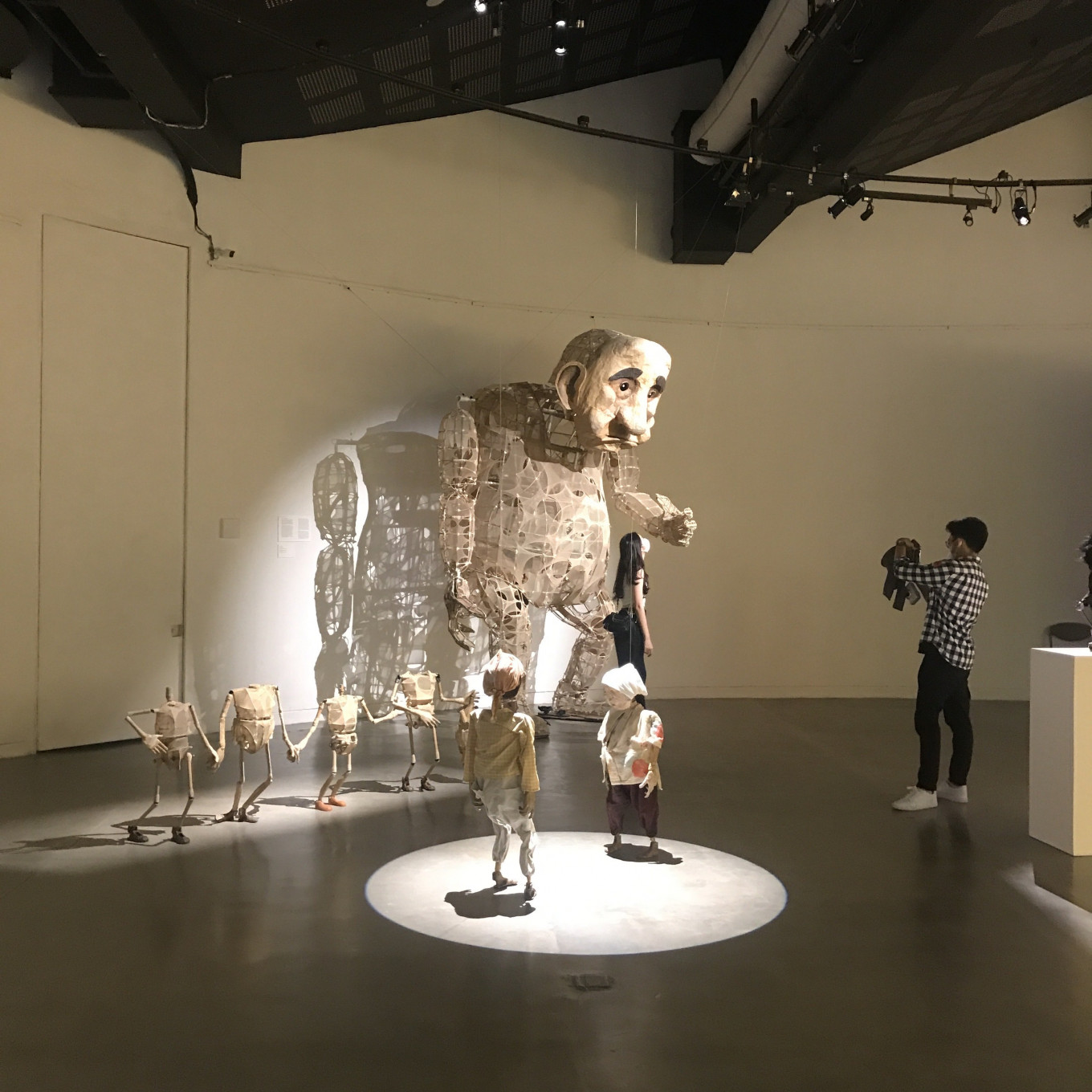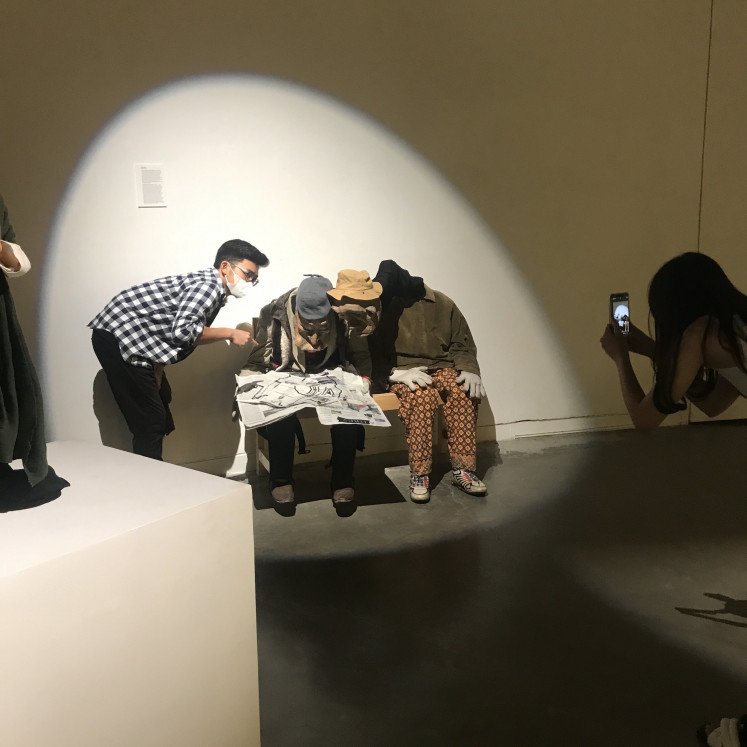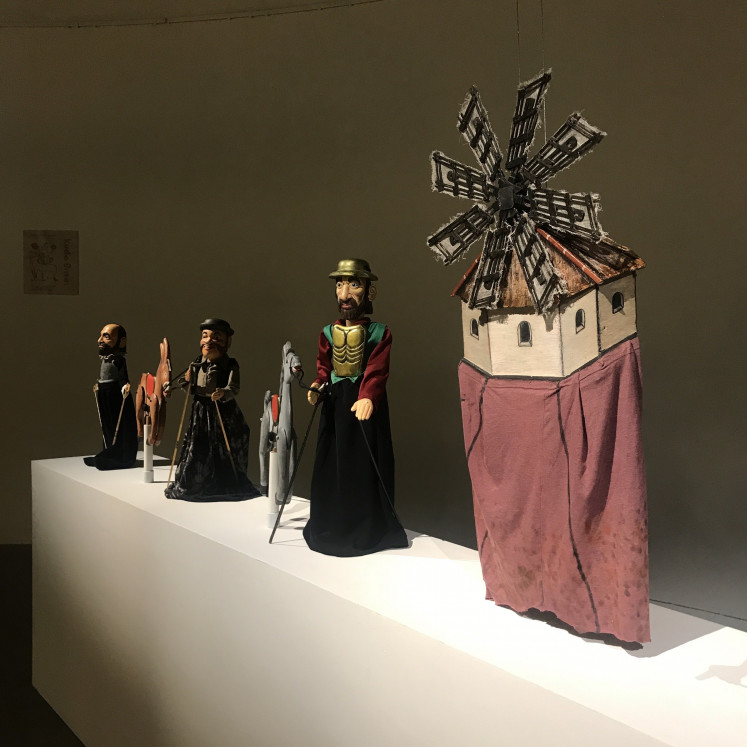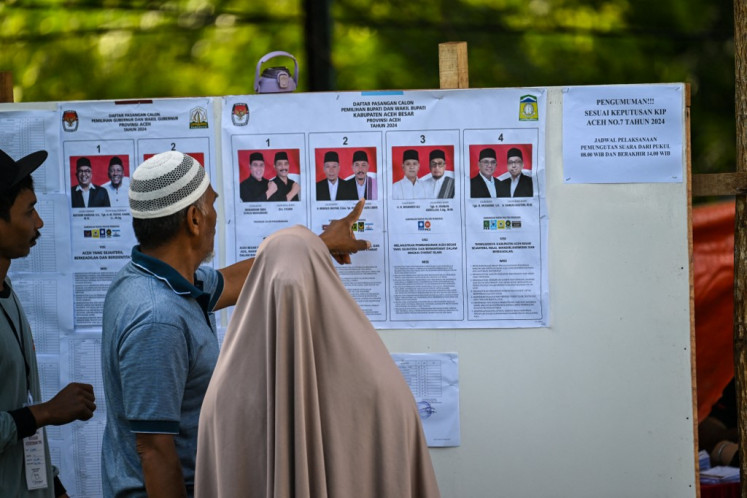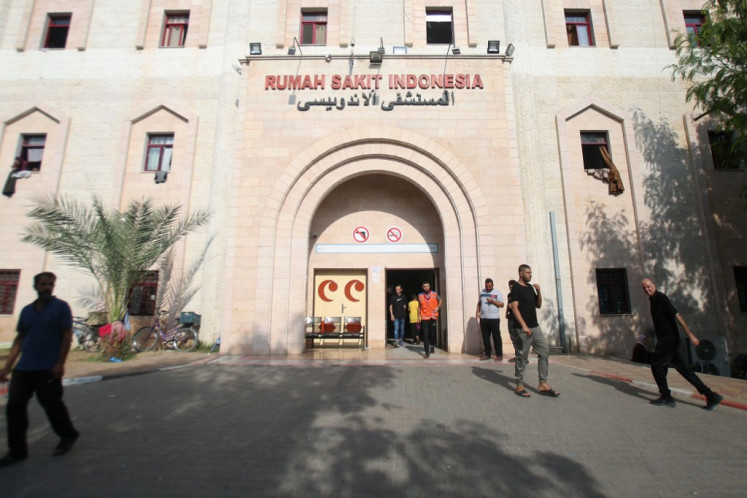Popular Reads
Top Results
Can't find what you're looking for?
View all search resultsPopular Reads
Top Results
Can't find what you're looking for?
View all search resultsSalihara puppet exhibit wanders beyond imaginative bounds
Jakarta’s Salihara cultural center holds an exhibition of puppets in all shapes and sizes that will let one’s imagination wander.
Change text size
Gift Premium Articles
to Anyone
J
akarta’s Salihara Arts Center holds an exhibition of puppets in all shapes and sizes that will let one’s imagination wander.
The large marionette stands in a corner of Galeri Salihara, looming over visitors and with its big bald head, looking like one of the trolls from the Lord of the Rings and The Hobbit film trilogies. Called Boneka Abak and created by the Papermoon Puppet Theatre, a closer glance finds that the puppet has a more meditative expression instead of a menacing one.
According to curators Asikin Hasan, Herry Dlm and Hendromasto Prasetyo, the pupput “portrays an old [man], as seen by his distant gaze and wide, straight mouth”.
The impression of age is further emphasized by the bushy eyebrows and bulbous nose of Boneka Abak, which was part of the theatrical troupe’s The Translucence, performed in 2017 at Japan’s Museum of Art, Kochi.
Pushing boundaries
The giant marionette is now among the pieces featured in the “Kelana Boneka” (Wandering puppets) marionette and puppet exhibition at Salihara Arts Center in South Jakarta, as part of the Musim Seni Salihara: Berseni Kembali (Salihara art season: The arts return) series of events.
The dolls by Papermoon Puppet Theatre and other artists displayed in Kelana Boneka were all previously used in performances.
“[The exhibit] aims to be on the boundary between the visual and performing arts […] in line with Salihara’s multidisciplinary or transdisciplinary approach to the medium,” the curatorial team said in a release.
“We decided to exhibit wayang theater and contemporary puppets because their scope is not only transdisciplinary, but on the boundary between the older, more traditional art forms and their more contemporary counterparts.”
The form and size of Boneka Abak, as well as those of its companion pieces Ojisan (grandfather), Obasan (grandmother) and Bodies Without A Head, fit this description. While Abak seems to be a meditation on old age, the dynamism and the lack of heads of Bodies Without A Head perhaps conveys the aimless rebelliousness of youth.
The puppets, whose significance might be open to interpretation, are in line with Papermoon founder Maria Tri Sulistiyani’s use of puppets, stagecraft and music to communicate her artistic vision.
“In terms of technique, Abak is both a ‘body puppet’ or wayang tubuh and wayang tangkai [stick puppet]. Three puppeteers operate him, one of whom is inside Boneka Abak, while the other two control the sticks connected to his hands,” said the curators.
“They are ‘bound’ by the anatomical precepts of wayang, among them its proportions. These precepts on the puppets’ shape determine how they can be controlled, [their] character, even the distance [at which] it can be watched.
“Generally, puppet makers realize that following human proportions tend to make marionettes, wayang and other puppets unappealing, rendering [their message] ineffective,” the statement continued.
Strike a pose: A visitor takes pictures with Seno Didi Mime’s 'Boneka Koran'. (JP/Tunggul Wirajuda) (JP/Tunggul Wirajuda)The Sena Didi Mime troupe effectively conveys this premise with Boneka Koran (newspaper puppets), a theatrical piece portraying two elderly men on a park bench reading a newspaper. Created by Yayu Unru, who took over the troupe following the passing of founders Sena A. Utoyo and Didi Petet, one can almost imagine the duo debating or discussing current affairs or the state of the world.
“Boneka Koran portrays [people] reading a newspaper with puppets instead of live actors, though this sequence is usually portrayed by [actors] with their movements and mimicry,” reads the curatorial notes on the work, which was exhibited at the Jakarta Playhouse (GKJ) and Mal Grand Indonesia’s Galeri Indonesia Kaya between 2017 and 2018.
The notes add that Boneka Koran represented change for the group. Before that piece, Sena Didi Mime was known for “performing lengthy pantomimes involving a large number of actors that show mundane scenes, such as showers, eating as well as reading” in works such as Becak, Flash Gordon and Jakarta-Jakarta between 1987 to 1993.
Universal wayang
According to playwright Goenawan Mohammad, Don Quixote de la Mancha has figured prominently in essays, paintings and other art forms since 1980. So, it comes as no surprise that he gave the Spanish classic a local twist by adapting it into a wayang golek (wooden puppet) show titled Wayang Den Kisot, performed in 2019 at Komunitas Salihara.
Stage director Endo Suanda and puppet maker Onie Cakabaru contributed their deft touches, giving the performance an impact disproportionate to the puppets’ small dimensions.
The curators noted that the production had managed to fuse various cultural references to the Spanish novel with wayang golek, not least Don Quixote’s absurdist dignity.
East West Wayang: 'Wayang Golek' of Miguel Cervantes, Sancho Panza and Don Quixote from Goenawan Mohammad’s 'wayang' play, 'Den Kisot'. (JP/Tunggul Wirajuda)) (JP/Tunggul Wirajuda)“Den Kisot’s wayang was portrayed as middle-aged [and] naïve, as he constantly glances at the sky. [He also] wore a suit of armor with a helmet resembling an upside-down pan. [Den Kisot’s] description is an ironic paradox of an insane sage that entertains, though he experiences much adversity,” says the curatorial notes. In addition, the wayang puppets portraying Den Kisot, his squire Sancho Panza, love interest Dulcinea del Toboso and the windmill are all based on the Don Quixote statue in Madrid and murals in Toledo.
Anonymous folk character wayangs and a puppet of Cervantes himself rounds out the performance, breaking the fourth wall and other theatrical devices to bring it closer to the audience.
Kelana Boneka also aims to unsettle with sculptor Heri Dono’s Kuda Binal (wild horse) wayang series that he made in 1992, and Miss Tjitjih Drama Group’s gruesomely inanimate Kuntilanak Miss Tjitjih, which depicts a female spirit in Indonesian folklore.
But whatever puppets catch the eye, Kelana Boneka is bound to make an impression on the psyche long after leaving the venue.
‘Kelana Boneka’
Salihara Arts Center
Jl. Salihara 16, Pasar Minggu, South Jakarta 12520
Until Sept. 4, Tuesday-Sunday, 11 a.m.-7 p.m.
Admission: Rp 35,000 per person (for ages 7 and up)
Online ticket purchases: tiket.salihara.org

